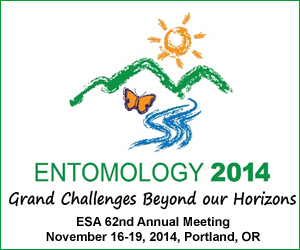Recognition of parasitized pea aphids, Acyrthosiphon pisum, by other pea aphids
Recognition of parasitized pea aphids, Acyrthosiphon pisum, by other pea aphids
Monday, March 10, 2014
Parasitoid can be an important mortality factor for herbivorous insects such as aphids. Therefore, unparasitized aphids may want to respond to other aphids in a way that minimizes future risk from the next generation of parasitoids. A biological control method for the pea aphid (Acyrthosiphon pisum) is the endoparasitic wasp, Aphidius ervi. Here, we observed the location of focal aphids that had been stung or not by a parasitoid along with the location of 25 surrounding aphids on the same plant. To distinguish aphids we used two color morphs (green and red), with one color used for the focal aphids and the other color used for the background aphids. We did experiments where the focal aphid was stung or not crossed with the two colors of focal aphid (4 treatments in total). Over a 72h period, we recorded the location and number of both focal and surrounding aphids. We analyzed the data to look at whether parasitism of the focal aphid influenced the location of both focal and surrounding aphids. Future studies would include teasing apart variables that could trigger surrounding aphids to disperse in response to changes in individual, focal aphids.


